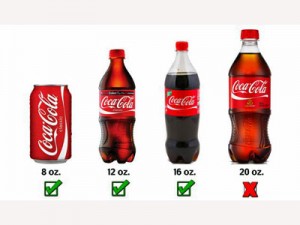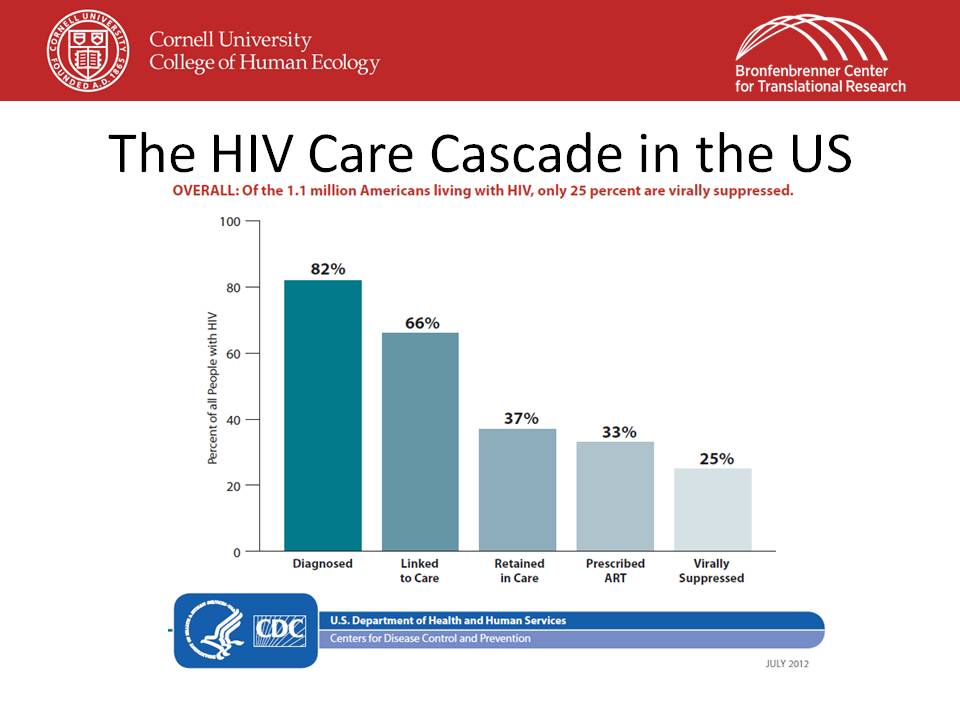 More than 15,000 lawsuits are filed against doctors in the United States each year for medical malpractice, a claim that medical treatment caused injury or death to the patient, typically involving a medical error. [Read more…]
More than 15,000 lawsuits are filed against doctors in the United States each year for medical malpractice, a claim that medical treatment caused injury or death to the patient, typically involving a medical error. [Read more…]
New evidence about medical malpractice
New evidence about the federal food stamps program
 Nearly 45 million American receive help purchasing food each year through the Supplemental Nutrition Assistance Program (SNAP), commonly called food stamps. Here on EBL, we’ve written about the federal program in the past, specifically how it helps keep families out of poverty. [Read more…]
Nearly 45 million American receive help purchasing food each year through the Supplemental Nutrition Assistance Program (SNAP), commonly called food stamps. Here on EBL, we’ve written about the federal program in the past, specifically how it helps keep families out of poverty. [Read more…]
The latest evidence on Vitamin D
 Keeping track of the latest evidence on which vitamin supplements to take can be confusing. Although new information is available regularly, mainstream media outlets don’t always report the full story, which can result in conflicting reports.
Keeping track of the latest evidence on which vitamin supplements to take can be confusing. Although new information is available regularly, mainstream media outlets don’t always report the full story, which can result in conflicting reports.
There is new, clear evidence this month: The U.S. Preventative Services task force is recommending that healthy, postmenopausal women should not take Vitamin D and calcium supplements to prevent fractures.
The task force – an independent panel of medical experts – reviewed more than one hundred medical studies before making their recommendation. It found insufficient evidence that taking vitamin D and calcium actually helps prevents fractures, and found a small risk of increased kidney stones for people who did take the supplements.
The task force’s recommendation does not apply to people suffering from osteoporosis or vitamin D deficiencies, or those living in skilled nursing facilities.
Cornell nutritionist Patsy Brannon has weighed in on the national debate over vitamin D supplements. Brannon was on the Institute of Medicine panel. While the panel recommended increasing the daily intake of vitamin D, it did not find that a deficiency is linked to chronic conditions such as cancer, diabetes and heart disease.
“The evidence available is inconsistent, with some studies demonstrating this association while others show no association, and still others show evidence of adverse effects with high blood levels of vitamin D,” Brannon told the Cornell Chronicle. Although we can’t conclude whether low vitamin D is associated with chronic disease, the evidence is clear that these vitamin supplements do not prevent fractures.
New evidence on fluoride
 Since I was a child, I have always considered fluoride a good thing for preventing tooth decay. I’ve always taken regular trips to the dentist, brushed with a fluoride toothpaste and generally taken good care of my teeth. So I was surprised last week to see a new review raising some questions about the safety of fluoride consumption.
Since I was a child, I have always considered fluoride a good thing for preventing tooth decay. I’ve always taken regular trips to the dentist, brushed with a fluoride toothpaste and generally taken good care of my teeth. So I was surprised last week to see a new review raising some questions about the safety of fluoride consumption.
The report – written by Harvard researchers and funded by the National Institute of Public Health – reviewed 27 studies published over a period of 22 years that looked into whether fluoride damaged the nervous systems of people. The studies included measured exposure to fluoride in drinking water related to cognitive function tests and IQ scores.
The researchers found that children living in areas where fluoride is added to the water score lower on IQ and cognitive tests compared with children living in areas where fluoride is not added to the water. The conclude that fluoride may be a developmental neurotoxicant for children that affects brain development at exposures much below those that can cause toxicity in adults.
What surprised me the most is that 70 percent of U.S. households live in communities where fluoride is added to the water. That’s millions of Americans ingesting an additive that has unclear long-term effects.
The report also calls for additional studies to evaluate dose-response relationship of fluoride – basically how much is needed to prevent cavities without causing harmful side effects
I feel lucky that my community does not add fluoride to our water supply. And I have to admit – since reviewing this new report – I’ve been much more careful about limiting the amount of toothpaste on my children’s brushes each day.
The case for taking aspirin
 It’s always a pleasure to see a mainstream media outlet providing the big picture on medical therapies. So I was fascinated by a recent opinion piece in the New York Times which called for the increased use of aspirin.
It’s always a pleasure to see a mainstream media outlet providing the big picture on medical therapies. So I was fascinated by a recent opinion piece in the New York Times which called for the increased use of aspirin.
In the article, cancer-researcher Dr. David Agus makes a clear case of the health benefits of aspirin. For years, the evidence has clearly established that aspirin reduced the risk of cardiovascular disease. In fact, he points out, the U.S. Preventative Services Task Force – an independent panel of health care experts – recommended aspirin for people up to 80 years old to prevent heart disease.
Now there is a growing body of solid evidence that aspirin also helps reduce the risk of cancer. Several major systematic reviews found that people who take an aspirin a day over the period of several years reduce their risk of developing cancer.
One major systematic review published by British researchers pulled together data on more than 77,000 patients from 51 separate clinical trials. It found some striking results: people who took aspirin daily were 15 percent less likely to die from cancer compared with those who didn’t take aspirin. They also had a 38 percent reduction in the risk of colorectal and gastrointestinal cancer. And for aspirin-takers who did get cancer, it was 38 percent less likely to spread to other parts of their bodies.
Other reviews have found that aspirin use not only reduces the risk of colorectal and gastrointestinal cancer but also decreases distant metastasis, the spreading of cancer to new regions of the body.
The take-home message: While people have been using aspirin for thousands of years, it was likely to be providing more health benefits than were ever realized.
The evidence on super-sized soft drinks
 Next year, New York City residents must say good-bye to their super-sized sodas and Double Big Gulps. Beginning in March, the city will limit to 16 ounces the size of soft drinks sold at restaurants, street carts, movie theaters and sporting venues. The New York City Board of Health passed the proposal last month in an effort to reduce the consumption of sugary drinks thought to contribute to the nation’s obesity epidemic.
Next year, New York City residents must say good-bye to their super-sized sodas and Double Big Gulps. Beginning in March, the city will limit to 16 ounces the size of soft drinks sold at restaurants, street carts, movie theaters and sporting venues. The New York City Board of Health passed the proposal last month in an effort to reduce the consumption of sugary drinks thought to contribute to the nation’s obesity epidemic.
But what evidence do we have about sugary soft drinks and weight gain and harm our health? We know that sugar-sweetened drinks account for nearly half of the total added sugars Americans consume and 7 percent of our total calories. But what impact does that have on our health?
New York Times writer Jane Brody also provides an overview of some of the evidence on this topic in her column this week. There are also several systematic reviews that tell the story:
- A 2007 meta analysis in the American Journal of Public Health reviewed 88 studies that examined the association between soft drink consumption and nutrition and health outcomes. The analysis found consuming soft drinks led to increased energy intake and body weight, and was associated with lower intakes of milk, calcium, and other nutrients. It also found an association between soda intake and diabetes.
- Another systematic review, published in the American Journal of Clinical Nutrition in 2006 – which included 30 cross-sectional, prospective and experimental studies looking at the relationship between sugary soft drink consumption and weight gain – concluded that sugary soft drinks are associated with weight gain and obesity.
- A third review published in Cambridge University’s Nutrition Research Reviews in 2008 came up with inconclusive results. The review examined 44 epidemiological studies and interventions and six meta-analyses – all looking at the relationship between sugary soda consumption and obesity. The author concluded that while sugary soft drinks are a source of calories, there is little evidence that they cause more weight gain than other sources of calories. He said the impact of sugary sodas on weight gains depends on variables including how much soda is consumed each day and the formulation of the specific drink. His review also concluded that consuming large amounts of sugary soft drinks on a daily basis is most directly associated with weight gain.
So, did the New York City Board of Health make an evidence-based decision in limiting sugary soft drink sizes? I think the answer is yes. While there is some mixed data on the association of soft drink consumption and weight gain, the evidence makes it abundantly clear that consuming large amounts of soda is the major problem. By limiting soft drinks sizes, the City is essential legislating the old adage, “Moderation in all things.”
The evidence on arsenic and rice
 The magazine Consumer Reports released a study last month that revealed low levels of arsenic – a chemical element that is toxic when consumed in higher doses – in rice and rice products grown across the world.
The magazine Consumer Reports released a study last month that revealed low levels of arsenic – a chemical element that is toxic when consumed in higher doses – in rice and rice products grown across the world.
The study tested 223 types of rice and rice products – such as rice-based cereals and rice milk – purchased in the United States in April, May and August of this year. It found arsenic in every product it tested, and dangerous levels of inorganic arsenic in dozens of products. Consumer Reports the story points out that their study is “a spot check of the market and “too limited to offer general conclusions about arsenic levels in specific brands within/across rice product categories.” Nevertheless, their article raises some surprising questions about toxins in our food supply.
Following the Consumer Reports study, the U.S. Food and Drug Administration released some preliminary results of a long-term study on arsenic levels in our food supply. Their study found levels of arsenic in rice similar to the Consumer Reports study.
So, what’s a rice-lover to do? Consumer Reports recommends limiting consumption of rice and rice products, while the FDA is not recommending any limits on rice consumption.
Since the FDA and Consumers Reports found the same level of arsenic in food, the question in my mind is: Exactly how dangerous is low-level exposure to arsenic? A search of systematic reviews yielded some interesting results.
- One meta-analysis found consuming arsenic in drinking water is associated with a higher risk of lung cancer.
- Another analysis found chronic arsenic exposure can lead to mental retardation and developmental disabilities such as physical, cognitive, psychological, sensory and speech impairments – although in higher levels that measured in the rice products tested by Consumer Reports and the FDA.
- Other analyses found inconclusive results on the relationship between arsenic exposure and diabetes and arsenic exposure and cardiovascular disease – although both of these reviews identified limitations in the study methodology and called for additional research.
My plan is to think more carefully about the rice products my family consumes. I’m not going to throw out the brown rice in my pantry, and we will still enjoy stir fry and sushi on a regular basis. But I certainly plan to steer way from rice cereals and other rice products at the grocery store.
The facts on Social Security
More than 75 years ago, the U.S. government created Social Security, the federal insurance program that provides benefits to individuals and their families who can no longer work because of disability, retirement or death. The program is complex, and its details are often debated among politicians.
Earlier this year, the Economic Policy Institute and the National Academy of Social Insurance published a guide that explains the facts about the Social Security program to young people. The document includes detailed, evidence-based explanations of Social Security’s history, beneficiaries, financing, and shortfalls. It pulls data from the Office of the Chief Actuary of the Social Security Administration, Congressional Budget Office, the Employee Benefits Research Institute, and the Center for Retirement Research.
Here’s a sampling of interesting facts from the document:
- In 2012, about 159 million individuals or 94% of the American workforce, worked in Social Security-covered employment. (Those not covered include government employees covered by other insurance programs, farm workers who do not meet minimum work requirements and students.)
- Approximately 55 million Americans received Social Security benefits in 2011. Seventy percent were retirees; 19 percent were disability beneficiaries and 11 percent were survivors of deceased workers.
- Without Social Security income, it is estimated that nearly half senior citizens would be living in poverty. Instead, fewer than 10 percent of seniors live in poverty.
- Because the U.S. population is aging and people are living longer, the Social Security program is projected to run up a deficit. The projected shortfall is 2.67% of taxable earnings over the next 75 years.
- There are a variety of ways to compensate for the deficit including raising taxes, expanding coverage, investing in equities, increasing the retirement age and reducing cost-of-living increases.
The guide concludes that Social Security fulfills an important need in our society as an insurance program for American workers. To learn more about Social Security benefits and about how your payroll taxes are used, it’s worth checking out this evidence-based document.
The science of political campaigns, Part 2
 Next month, President Barack Obama and Republican Presidential Candidate Mitt Romney will face off on national television on four separate occasions to share their ideas for governing America and explain why voters should chose them.
Next month, President Barack Obama and Republican Presidential Candidate Mitt Romney will face off on national television on four separate occasions to share their ideas for governing America and explain why voters should chose them.
While it’s not clear how many Americans make their voting decisions based on the debates, we do know they are an important part of the campaign. So I was thrilled to find some evidence on how to consider the candidates responses critically.
Todd Rogers, a behavioral psychologist at Harvard University, is among a growing group of researchers applying social science to issues effecting political campaigns. (We’ve written about his work on get-out-the-vote phone calls.) He wanted to address the issue of how candidates respond when get asked a question that they don’t want to answer – and whether the public notices when politicians dodge a question by talking about a different topic instead.
Rogers and his colleague Michael Norton, an associate professor at the Harvard Business School, designed a study to determine under what conditions people can get away with dodging a question, and under what conditions listeners can detect what’s happening.
In their study, published in the Journal of Experimental Psychology, they recorded a speaker answering a question about universal healthcare. Then they paired that answer with three separate questions: the correction question about health care, one about illegal drug use and another about terrorism. They showed the three question-and-answer pairings to separate groups of people and asked them to rate the truthfulness of the speaker.
Their research found that when the question and answer sounded somewhat similar – such as in the case where the speaker was asked about drug use but responded about healthcare – the audience rate the speaker as trustworthy. (In fact, most of the people who head the answer about illegal drug use couldn’t even remember the question.) But when the answer was very clearly addressing a different topic – such as when the speaker was asked about health care but responded about terrorism – the audience detected the dodge.
In another part of the study, Rogers and Norton used the same questions and answers, but posted the question on the screen in for some viewers. They found viewers who saw the question posted on the screen while the speaker answered were more than twice as likely to detect a dodge, even in subtle cases.
Rogers advocates for posting the questions on the screen during the presidential candidates debates, although he concedes it’s unlikely to happen this year.
You can hear an interview with Rogers and learn about other research on political campaigning in last week’s episode of NPR’s Science Friday.
Move it or lose it: Real evidence on physical activity
 In honor of the 2012 London Olympics, the British medical journal The Lancet published a series of publications about the state of physical fitness across the globe.
In honor of the 2012 London Olympics, the British medical journal The Lancet published a series of publications about the state of physical fitness across the globe.
The series includes a plethora of new evidence:
- One large-scale report collected data on physical activity levels for adults 15 years or older from 122 countries worldwide. It found that more than 31 percent of adults are physically inactive. The researchers found that inactivity levels rise as people get older, and the women are less likely to be active than men. It also found that physical inactivity is more problematic in higher-income nations.
- A far-reaching analysis in the series uses advanced statistical methods of quantify the health implications of physical inactivity on the major non-communicable diseases in 122 countries across the globe. The authors concluded inactivity was a contributing factor to heart disease, diabetes, breast cancer and colon cancer. The estimated that 9 percent of premature death across the word were related to physical inactivity.
- Another article provides a comprehensive review of evidence-based strategies for promoting physical activity. The review found that community and mass media informational campaigns helped encourage people to get moving. It also found that schools and worksites are good venues for promoting physical activity through education, sports and social groups. Finally, the authors found that finding ways to encourage activity within a community – including building sidewalks, implementing policies that encourage active transportation and building parks and gyms – are all good ways to improve physical fitness.
While the Lancet provides a wide range of data about physical activity across the world, the take-home message is a simple one: It’s important to get moving, no matter what your age. Policy makers at all levels around the world should make it a priority to increase physical activity levels in their communities and countries.




